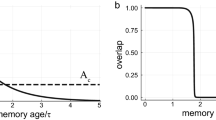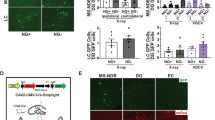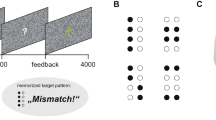Abstract
The development of technologies to protect or enhance memory in older people is an enduring goal of translational medicine. Here we describe repetitive (4-day) transcranial alternating current stimulation (tACS) protocols for the selective, sustainable enhancement of auditory–verbal working memory and long-term memory in 65–88-year-old people. Modulation of synchronous low-frequency, but not high-frequency, activity in parietal cortex preferentially improved working memory on day 3 and day 4 and 1 month after intervention, whereas modulation of synchronous high-frequency, but not low-frequency, activity in prefrontal cortex preferentially improved long-term memory on days 2–4 and 1 month after intervention. The rate of memory improvements over 4 days predicted the size of memory benefits 1 month later. Individuals with lower baseline cognitive function experienced larger, more enduring memory improvements. Our findings demonstrate that the plasticity of the aging brain can be selectively and sustainably exploited using repetitive and highly focalized neuromodulation grounded in spatiospectral parameters of memory-specific cortical circuitry.
This is a preview of subscription content, access via your institution
Access options
Access Nature and 54 other Nature Portfolio journals
Get Nature+, our best-value online-access subscription
$32.99 / 30 days
cancel any time
Subscribe to this journal
Receive 12 print issues and online access
$209.00 per year
only $17.42 per issue
Buy this article
- Purchase on SpringerLink
- Instant access to full article PDF
Prices may be subject to local taxes which are calculated during checkout






Similar content being viewed by others
Data availability
The data used for analysis in this study are freely and permanently available on Open Science Framework (https://osf.io/g4wcq/).
Code availability
No custom codes were used for the experiment or the primary analyses.
References
Centers for Disease Control and Prevention. Trends in aging—United States and worldwide. MMWR Morb. Mortal. Wkly. Rep. 52, 101–104 (2003). 106.
Samanez-Larkin, G. R. & Knutson, B. Decision making in the ageing brain: changes in affective and motivational circuits. Nat. Rev. Neurosci. 16, 278–289 (2015).
Søraas, A. et al. Self-reported memory problems 8 months after COVID-19 Infection. JAMA Netw. Open 4, e2118717 (2021).
Rapp, P. R. & Amaral, D. G. Individual differences in the cognitive and neurobiological consequences of normal aging. Trends Neurosci. 15, 340–345 (1992).
Gauthier, S. et al. Mild cognitive impairment. Lancet 367, 1262–1270 (2006).
Grover, S., Nguyen, J. A. & Reinhart, R. M. G. Synchronizing brain rhythms to improve cognition. Annu. Rev. Med. 72, 29–43 (2021).
Reinhart, R. M. G. & Nguyen, J. A. Working memory revived in older adults by synchronizing rhythmic brain circuits. Nat. Neurosci. 22, 820–827 (2019).
Cowan, N. What are the differences between long-term, short-term, and working memory? Prog. Brain Res. 169, 323–338 (2008).
Parkinson, S. R., Lindholm, J. M. & Inman, V. W. An analysis of age differences in immediate recall. J. Gerontol. 37, 425–431 (1982).
Sullivan, E. V. & Sagar, H. J. Double dissociation of short-term and long-term memory for nonverbal material in Parkinson’s disease and global amnesia. A further analysis. Brain 114, 893–906 (1991).
Atkinson, R. C. & Shiffrin, R. M. Human memory: a proposed system and its control processes. in The Psychology of Learning and Motivation: Advances in Research and Theory Volume 2 (ed. Spence, K. W.) 89–195 (Academic Press, 1968).
Baddeley, A. D. & Warrington, E. K. Memory coding and amnesia. Neuropsychologia 11, 159–165 (1973).
Shallice, T. & Warrington, E. K. Independent functioning of verbal memory stores: a neuropsychological study. Q. J. Exp. Psychol. 22, 261–273 (1970).
Innocenti, I. et al. TMS interference with primacy and recency mechanisms reveals bimodal episodic encoding in the human brain. J. Cogn. Neurosci. 25, 109–116 (2013).
Lisman, J. E. & Jensen, O. The theta–gamma neural code. Neuron 77, 1002–1016 (2013).
Heusser, A. C., Poeppel, D., Ezzyat, Y. & Davachi, L. Episodic sequence memory is supported by a theta–gamma phase code. Nat. Neurosci. 19, 1374–1380 (2016).
Serruya, M. D., Sederberg, P. B. & Kahana, M. J. Power shifts track serial position and modulate encoding in human episodic memory. Cereb. Cortex 24, 403–413 (2014).
Wolinski, N., Cooper, N. R., Sauseng, P. & Romei, V. The speed of parietal theta frequency drives visuospatial working memory capacity. PLoS Biol. 16, e2005348 (2018).
Alekseichuk, I., Turi, Z., Amador de Lara, G., Antal, A. & Paulus, W. Spatial working memory in humans depends on theta and high gamma synchronization in the prefrontal cortex. Curr. Biol. 26, 1513–1521 (2016).
Feurra, M., Galli, G., Pavone, E. F., Rossi, A. & Rossi, S. Frequency-specific insight into short-term memory capacity. J. Neurophysiol. 116, 153–158 (2016).
Hoy, K. E., Whitty, D., Bailey, N. & Fitzgerald, P. B. Preliminary investigation of the effects of γ-tACS on working memory in schizophrenia. J. Neural Transm. 123, 1205–1212 (2016).
Javadi, A.-H., Glen, J. C., Halkiopoulos, S., Schulz, M. & Spiers, H. J. Oscillatory reinstatement enhances declarative memory. J. Neurosci. 37, 9939–9944 (2017).
Nomura, T., Asao, A. & Kumasaka, A. Transcranial alternating current stimulation over the prefrontal cortex enhances episodic memory recognition. Exp. Brain Res. 237, 1709–1715 (2019).
Klink, K., Peter, J., Wyss, P. & Klöppel, S. Transcranial electric current stimulation during associative memory encoding: comparing tACS and tDCS effects in healthy aging. Front. Aging Neurosci. 12, 66 (2020).
Köhler, S., Paus, T., Buckner, R. L. & Milner, B. Effects of left inferior prefrontal stimulation on episodic memory formation: a two-stage fMRI—rTMS study. J. Cogn. Neurosci. 16, 178–188 (2004).
Wynn, S. C., Kessels, R. P. C. & Schutter, D. J. L. G. Effects of parietal exogenous oscillatory field potentials on subjectively perceived memory confidence. Neurobiol. Learn. Mem. 168, 107140 (2020).
Benussi, A. et al. Exposure to gamma tACS in Alzheimer’s disease: a randomized, double-blind, sham-controlled, crossover, pilot study. Brain Stimul. 14, 531–540 (2021).
Edwards, D. et al. Physiological and modeling evidence for focal transcranial electrical brain stimulation in humans: a basis for high-definition tDCS. Neuroimage 74, 266–275 (2013).
Reinhart, R. M. G., Cosman, J. D., Fukuda, K. & Woodman, G. F. Using transcranial direct-current stimulation (tDCS) to understand cognitive processing. Atten. Percept. Psychophys. 79, 3–23 (2017).
Nasreddine, Z. S. et al. The Montreal Cognitive Assessment, MoCA: a brief screening tool for mild cognitive impairment. J. Am. Geriatr. Soc. 53, 695–699 (2005).
Herrmann, N. et al. A validation study of the Geriatric Depression Scale short form. Int. J. Geriatr. Psychiatry 11, 457–460 (1996).
Axmacher, N. et al. Cross-frequency coupling supports multi-item working memory in the human hippocampus. Proc. Natl Acad. Sci. USA 107, 3228–3233 (2010).
Karabanov, A. N., Saturnino, G. B., Thielscher, A. & Siebner, H. R. Can transcranial electrical stimulation localize brain function? Front. Psychol. 10, 213 (2019).
Grover, S., Nguyen, J. A., Viswanathan, V. & Reinhart, R. M. G. High-frequency neuromodulation improves obsessive-compulsive behavior. Nat. Med. 27, 232–238 (2021).
Nguyen, J., Deng, Y. & Reinhart, R. M. G. Brain-state determines learning improvements after transcranial alternating-current stimulation to frontal cortex. Brain Stimul. 11, 723–726 (2018).
Sederberg, P. B. et al. Gamma oscillations distinguish true from false memories. Psychol. Sci. 18, 927–932 (2007).
Burke, J. F. et al. Theta and high-frequency activity mark spontaneous recall of episodic memories. J. Neurosci. 34, 11355–11365 (2014).
Fiebelkorn, I. C. & Kastner, S. A rhythmic theory of attention. Trends Cogn. Sci. 23, 87–101 (2019).
Deng, Y., Reinhart, R. M., Choi, I. & Shinn-Cunningham, B. G. Causal links between parietal alpha activity and spatial auditory attention. eLife 8, e51184 (2019).
Herweg, N. A., Solomon, E. A. & Kahana, M. J. Theta oscillations in human memory. Trends Cogn. Sci. 24, 208–227 (2020).
Reinhart, R. M. G. & Woodman, G. F. Enhancing long-term memory with stimulation tunes visual attention in one trial. Proc. Natl Acad. Sci. USA 112, 625–630 (2015).
Simons, J. S. & Spiers, H. J. Prefrontal and medial temporal lobe interactions in long-term memory. Nat. Rev. Neurosci. 4, 637–648 (2003).
Ranganath, C. & Blumenfeld, R. S. Doubts about double dissociations between short- and long-term memory. Trends Cogn. Sci. 9, 374–380 (2005).
Ericsson, K. A. & Kintsch, W. Long-term working memory. Psychol. Rev. 102, 211–245 (1995).
Guida, A. et al. The effect of long-term working memory through personalization applied to free recall: uncurbing the primacy-effect enthusiasm. Mem. Cogn. 41, 571–587 (2013).
Healey, M. K. & Kahana, M. J. A four-component model of age-related memory change. Psychol. Rev. 123, 23–69 (2016).
Benchenane, K., Tiesinga, P. H. & Battaglia, F. P. Oscillations in the prefrontal cortex: a gateway to memory and attention. Curr. Opin. Neurobiol. 21, 475–485 (2011).
Schwab, B. C., König, P. & Engel, A. K. Spike-timing-dependent plasticity can account for connectivity aftereffects of dual-site transcranial alternating current stimulation. Neuroimage 237, 118179 (2021).
Krause, M. R., Vieira, P. G., Csorba, B. A., Pilly, P. K. & Pack, C. C. Transcranial alternating current stimulation entrains single-neuron activity in the primate brain. Proc. Natl Acad. Sci. USA 116, 5747–5755 (2019).
Koen, J. D. & Rugg, M. D. Neural dedifferentiation in the aging brain. Trends Cogn. Sci. 23, 547–559 (2019).
Long, N. M., Danoff, M. S. & Kahana, M. J. Recall dynamics reveal the retrieval of emotional context. Psychon. Bull. Rev. 22, 1328–1333 (2015).
Wagner, A. D., Maril, A., Bjork, R. A. & Schacter, D. L. Prefrontal contributions to executive control: fMRI evidence for functional distinctions within lateral prefrontal cortex. Neuroimage 14, 1337–1347 (2001).
O’Connor, A. R., Han, S. & Dobbins, I. G. The inferior parietal lobule and recognition memory: expectancy violation or successful retrieval? J. Neurosci. 30, 2924–2934 (2010).
Schutter, D. J. L. G. & Wischnewski, M. A meta-analytic study of exogenous oscillatory electric potentials in neuroenhancement. Neuropsychologia 86, 110–118 (2016).
Reinhart, R. M. G. Disruption and rescue of interareal theta phase coupling and adaptive behavior. Proc. Natl Acad. Sci. USA 114, 11542–11547 (2017).
Reinhart, R. M. G., Xiao, W., McClenahan, L. & Woodman, G. F. Electrical stimulation of visual cortex can immediately improve spatial vision. Curr. Biol. 25, 1867–1872 (2016).
Reinhart, R. M. G., Zhu, J., Park, S. & Woodman, G. F. Synchronizing theta oscillations with direct-current stimulation strengthens adaptive control in the human brain. Proc. Natl Acad. Sci. USA 112, 9448–9453 (2015).
Poreisz, C., Boros, K., Antal, A. & Paulus, W. Safety aspects of transcranial direct current stimulation concerning healthy subjects and patients. Brain Res. Bull. 72, 208–214 (2007).
Gandiga, P. C., Hummel, F. C. & Cohen, L. G. Transcranial DC stimulation (tDCS): a tool for double-blind sham-controlled clinical studies in brain stimulation. Clin. Neurophysiol. 117, 845–850 (2006).
Kim, H.-Y. Statistical notes for clinical researchers: assessing normal distribution (2) using skewness and kurtosis. Restor. Dent. Endod. 38, 52–54 (2013).
Field, A. Discovering Statistics Using IBM SPSS Statistics (Sage Publications, 2013).
West, S. G., Finch, J. F. & Curran, P. J. Structural equation models with nonnormal variables: problems and remedies. in Structural Equation Modeling: Concepts, Issues, and Applications (ed. Hoyle, R. H.) 56–75 (Sage Publications, 1995).
Acknowledgements
This work was supported by grants from the National Institutes of Health (R01-AG063775 and R01-MH114877) and a generous gift from an individual philanthropist awarded to R.M.G.R. We thank C. Willing and B. Lahner for assistance with data collection and X. (P.) Cheng and the anonymous reviewers for their thoughtful feedback on the manuscript.
Author information
Authors and Affiliations
Contributions
Conceptualization: R.M.G.R. and S.G.; data acquisition: R.M.G.R. and V.V.; data analysis and interpretation: R.M.G.R., S.G., W.W., V.V. and C.T.G.; writing—original draft: S.G. and W.W.; writing—review and editing: R.M.G.R., S.G., W.W., V.V. and C.T.G.; funding acquisition: R.M.G.R.; supervision: R.M.G.R.
Corresponding author
Ethics declarations
Competing interests
The authors declare no competing interests.
Peer review
Peer review information
Nature Neuroscience thanks Simon Hanslmayr, Michael Nitsche and the other, anonymous, reviewer(s) for their contribution to the peer review of this work.
Additional information
Publisher’s note Springer Nature remains neutral with regard to jurisdictional claims in published maps and institutional affiliations.
Extended data
Extended Data Fig. 1 Differences in memory performance according to biological sex in the DLPFC gamma group in Experiment 1.
Exploratory analyses examining the impact of biological sex showed a significant interaction effect of serial position x group x biological sex (F6.1,164.7 = 6.139, p = 7 × 10−6, ηp2 = 0.185) in Experiment 1 (N = 20 in the DLPFC gamma group, N = 20 in the IPL theta group, and N = 20 in the sham group). Follow-up analyses showed that the serial position x biological sex interaction was significant in the DLPFC gamma group (F2.4,43.2 = 19.160, p = 2.86 × 10−7, ηp2 = 0.516) but not in the IPL theta and sham groups (Fs < 1.754, ps > 0.173). Independent samples t-tests were performed to compare the memory performance for a given serial position on a given day between males and females in the DLPFC gamma group. Better primacy performance was observed among males in the DLPFC gamma group than females on day 2 (t18 = 2.619, p = 0.017, d = 1.177), day 3 (t18 = 2.288, p = 0.034, d = 1.028), day 4 (t18 = 3.151, p = 0.006, d = 1.416), and 1 month (t13.4 = 2.477, p = 0.027, d = 1.029) timepoints. Other trends observed were improved performance in males on day 2 of neuromodulation, evident in the middle 1 (t18 = 2.490, p = 0.023, d = 1.119) and the middle 3 (t18 = 2.136, p = 0.047, d = 0.960) clusters, and better performance among females at the offline timepoint 1 month after intervention in the middle 2 (t18 = −2.226, p = 0.039, d = −1.001) and recency (t18 = −2.448, p = 0.025, d = −1.1) clusters. However, none of these effects survived correction for multiple comparisons (Bonferroni correction; pcutoff = 0.0017). Data are represented as mean values +/− S.E.M. across participants.
Supplementary information
Supplementary Information
Supplementary Tables 1–4 in PDF
Rights and permissions
Springer Nature or its licensor holds exclusive rights to this article under a publishing agreement with the author(s) or other rightsholder(s); author self-archiving of the accepted manuscript version of this article is solely governed by the terms of such publishing agreement and applicable law.
About this article
Cite this article
Grover, S., Wen, W., Viswanathan, V. et al. Long-lasting, dissociable improvements in working memory and long-term memory in older adults with repetitive neuromodulation. Nat Neurosci 25, 1237–1246 (2022). https://doi.org/10.1038/s41593-022-01132-3
Received:
Accepted:
Published:
Issue Date:
DOI: https://doi.org/10.1038/s41593-022-01132-3
This article is cited by
-
γ neuromodulations: unraveling biomarkers for neurological and psychiatric disorders
Military Medical Research (2025)
-
Frequency-specific and state-dependent neural responses to brain stimulation
Molecular Psychiatry (2025)
-
The effect of fampridine on working memory: a randomized controlled trial based on a genome-guided repurposing approach
Molecular Psychiatry (2025)
-
Gamma-frequency transcranial alternating current stimulation over the left posterior parietal cortex enhances the long-term retention of associative memory
Experimental Brain Research (2025)
-
Differing effectiveness of transcranial random noise stimulation and transcranial direct current stimulation for enhancing working memory in healthy individuals: a randomized controlled trial
Journal of NeuroEngineering and Rehabilitation (2024)



